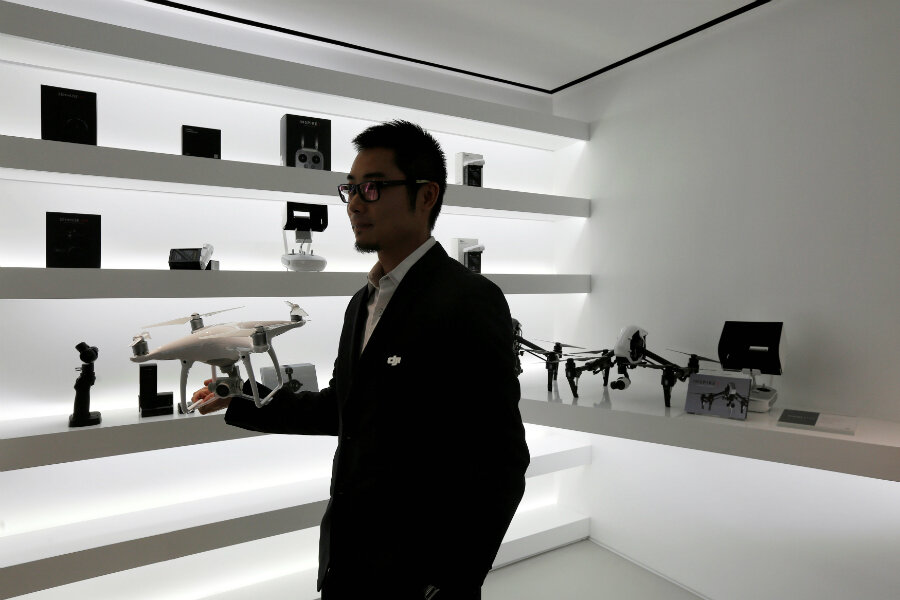As drones get smaller and cheaper, are safety regulations keeping up?
Loading...
Appealing to the growing market of amateur drone enthusiasts, Chinese drone maker DJI unveiled its newest model, the Mavic Pro, which is the size of a water bottle and sports a 12 megapixel camera.
Flying 40 miles per hour for a 27 minute duration, the Mavic Pro's specs are remarkably similar to DJI's higher end drone, the Phantom 4, which speaks to the proliferation of hobbyist drone operators that has occurred since the Federal Aviation Association (FAA) released its unmanned aircraft systems guidelines in June. However, some are worried that even with the new guidelines, hobby drone use has outpaced safety.
In Congress last fall, Democrats proposed a bill called the Consumer Drone Safety Act, which would require manufacturers to sell safety information with drones and place technological safeguards into the drones themselves. Sen. Charles Schumer (D) of New York, along with Sen. Dianne Feinstein (D) of California, expressed frustration with unchecked drone use.
"Our bill would advance technologies focused on detecting, identifying, and cracking down on dangerous drone use," Senator Schumer said, according to The Hill. "Drone technology has the potential to be truly positive and transformative, and many users operate them safely, but when it comes to protecting our skies and the traveling public, we can leave no stone unturned."
FAA unmanned aircraft regulations, which went into effect Aug. 29, provide two courses of action for hobbyists looking to fly drones: either to get a remote pilot certificate, or to adhere to set of community guidelines including keeping the drone in the visual line-of-sight, giving way to manned aircraft, and being mindful of protected airspace.
Prior to the release of the regulations there were as many as 400,000 FAA-registered hobbyists, but as hardware becomes more affordable, that number is poised to increase. At $749 and $999, the Mavic Pro is significantly cheaper than the $1,400 Phantom 4.
"I think we've got the balance [between government and industry] right now," Brian Wynne, the president of the Association for Unmanned Vehicle Systems International (AUVSI), told the Monitor in August. "Now we're actually getting things done in a much more timely fashion."
DJI is not the only company looking to capitalize on hobbyists. GoPro’s Karma drone is also designed to be foldable and portable, but at $800 it does not include the camera.
Ryan Wood of Rocky Mountain Unmanned Systems told the Monitor that drones costing $1,000 today would have cost 10 times that three years ago.
With less upfront investment required, and increased regulation actually giving way to more freedom, drone hobbyists have come out of the woodwork to experiment with the new technology – but not without their fair share of mishaps, which have some wondering if the safety standards imposed by the FAA are enough.
Drones that have found their way into protected airspace have interfered with wildfire fighting, collided with planes, and crash landed on the White House lawn, but they have also caused injuries.
While at a Pi Kappa Phi party at University of Southern California, a woman suffered injuries when a drone flying overhead to photograph the party fell on her head, resulting in long-term headaches that have affected her ability to study. She is suing the fraternity for damages.
Similarly, rapper Stanley "Flesh-N-Bone" Howse was hit in the face by a drone while playing a show at California's High Life Music Festival in Victorville. Although he was not hurt, and the incident did not disrupt his playing, it is unclear whether a fan or someone working at the festival was flying the drone.
This report includes material from the Associated Press.








